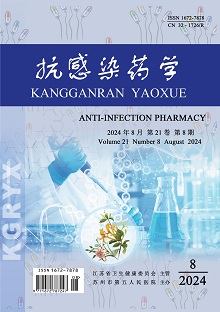CAI Cai-min, XIE Gen-ying, ZENG Guo-fu, XIE Su-zhi, LI Bi-yun
Objective: To analyze the practice of anti-infective pharmacy consultation for inpatients in the hospital and provide a reference for the implementation of pharmacy consultation by clinical pharmacists. Methods: A total of 77 inpatients who were admitted to Xiamen Haicang Hospital from January 2022 to February 2023 and received anti-infective pharmacy consultation were selected as the research subjects. The data of the patients, such as age, sex, department, microbiological examination results, consultation opinions and their adoption, treatment outcomes, etc. were collected to analyze the clinical characteristics of patients who received anti-infective pharmacy consultation. Results: Among the 77 patients who received anti-infective pharmacy consultation, the number of males was significantly more than that of females (50 cases vs 27 cases), and the majority of patients were the elderly over 60 years old (43 cases, 55.84%). The patients were mainly from general surgery II (26 cases, 33.77%) and department of urology and pain (20 cases, 25.97%), followed by the department of cardiovascular medicine (11 cases, 14.29%) and the department of oncology and hematology (10 cases, 12.99%). Among the 77 patients, 46 cases had positive microbiological examination results, and a total of 46 strains of pathogenic bacteria were detected, including 22 strains of Gram-positive bacteria, 22 strains of Gram-negative bacteria and 2 strains of fungi. The consultation opinions proposed by clinical pharmacists mainly included "adjusting the types of antibacterial drugs" (46 cases, 59.74%) and "maintaining the current anti-infective treatment regimen" (21 cases, 27.27%). Among the 77 patients, pharmacy consultation opinions for 73 cases were adopted by doctors, of which 57 cases had the outcomes of recovery or improvement, and 16 cases had the outcomes of worsening of the condition or ineffective treatment. Conclusion: In the hospitals, clinical pharmacists carry out the pharmacy consultations and put forward personalized drug treatment suggestions, which are welcomed and accepted by clinicians and greatly promote the recovery of patients.
